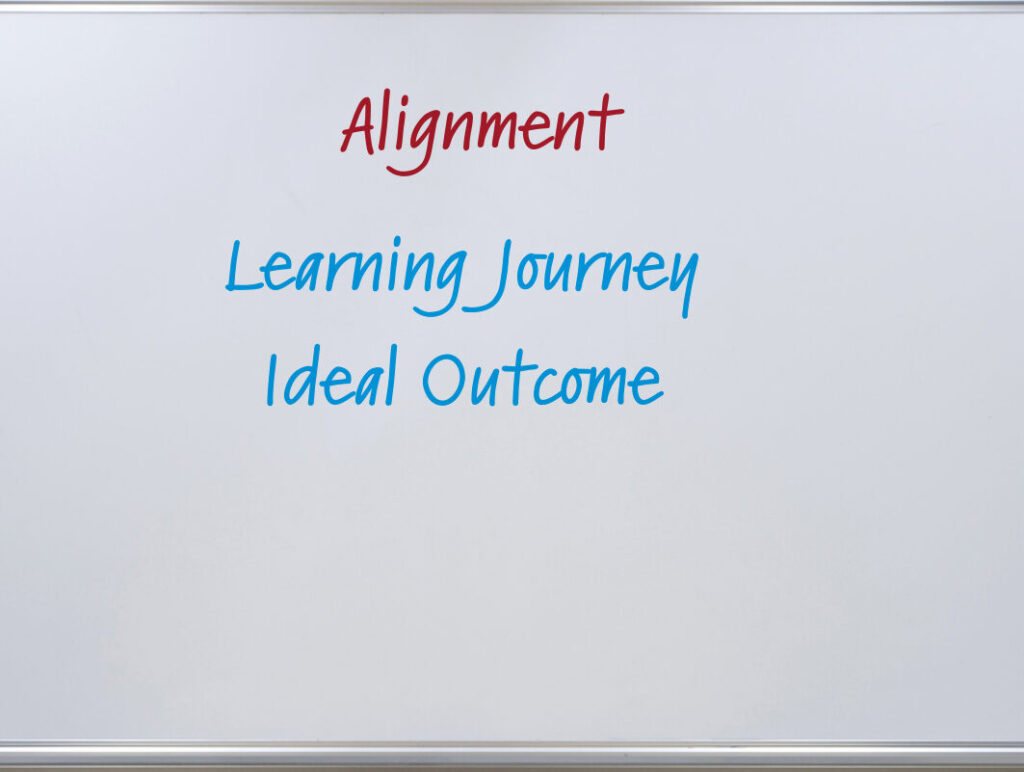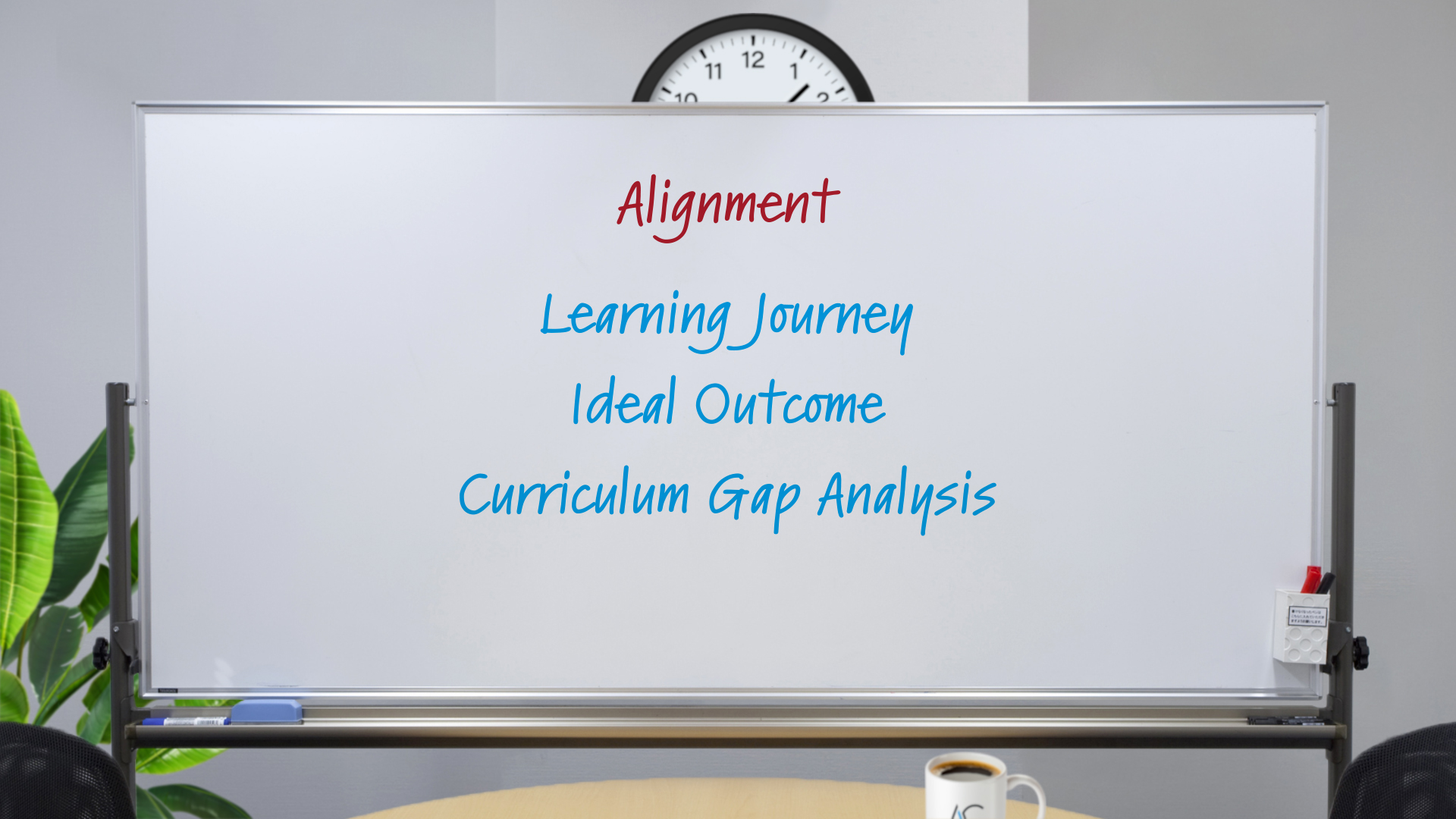Story Introduction
Kathryn is the Chief Learning Officer at a fictional manufacturing company called AshCom, located in Minneapolis. Kathryn has been the CLO for more than five years and, with her team, has produced some amazing learning experiences. But things are changing fast. Rebecca is a consultant from MindSpring who has served as an advisor to Kathryn for the last four years. This is their story.
The first few sessions with Rebecca had been challenging for Kathryn. Rebecca, the MindSpring consultant, asked hard questions. Kathryn’s normally pleasant demeanor was prickly, something Rebecca had not seen before. Kathryn was under significant pressure. Learning outcomes had been declining for months in the midst of company-wide poor financial performance. A hiring freeze was the first announcement from leadership. A few weeks later, layoffs began.
Kathryn began the year with a learning team of ten people. It was now down to seven. One of her highly skilled experience designers left when the hiring freeze was announced. Two others were part of the layoffs, a decision Kathryn had to make. For the first time since she became the Chief Learning Officer at AshCom, Kathryn was scanning social media sites for CLO job listings, something she never considered before.
Kathryn needed an outsider’s opinion—more than an opinion, really. Kathryn was looking for some insight and wisdom. Rebecca had been helpful in other circumstances, and it was Kathryn’s hope that she would be again.
Rebecca kicked off their time together by writing on a whiteboard what she called the Eleven Essential Questions:
- What are your top company priorities right now and how will learning play a pivotal role in achieving them?
- Who are the targeted learners and how well do you know them?
- Do your learners care about learning and how does learning connect with their goals?
- What organizational factors are influencing your learning initiatives?
- How will get your learners’ attention and build momentum for learning?
- What are the essential topics for learners right now, what is their order, and is everyone aligned?
- How are you measuring the impact of learning on your organization?
- How are you keeping current or ahead of the curve in the learning industry?
- How are you upskilling your learning team?
- How will you meet your objectives without adding full time team members?
- What is your 3–5-year plan for learning in your company?
Kathryn and Rebecca had already covered the first four questions. Those were hard discussions given all that was going on at AshCom.
Kathryn actually looked forward to diving deep into the next question: What are the essential topics for learners right now, what is their order, and is everyone aligned?
Rebecca began the conversation. “When I’ve done this with other clients, they want to dive right into creating a list of topics to cover in the learning experiences they plan to deliver in the coming months.” Rebecca paused at this point, waiting for a response.
Opening her notebook, Kathryn replied, “I actually came with my list. It’s in here somewhere…” She flipped back and forth through the pages. “Seems like I’ve taken a lot of notes lately.”
“I’m sure you have,” said Rebecca. “When things are tense, I tend to fill entire notebooks as I think through my challenges. But you can stop looking for your list, and I promise we’ll come back to it. For now, I want to talk about the most important word today.” Rebecca stepped to the whiteboard and wrote ALIGNMENT in red. All caps.

Kathryn smiled for a moment. “Looks like you’re trying hard to get my attention.”
“I am,” said Rebecca. “I can tell you that the single most common reason for a learning failure is a lack of alignment. It sinks more learning projects than anything else. The people who are framing the experience might be very smart, skilled, and experienced, but if they have a different vision the result will be a mess.”
Kathryn nodded in agreement so Rebecca continued, “Sometimes the problem isn’t the people who are building the learning experience. It’s the stakeholders who aren’t aligned with one another. In the very worst cases, the key stakeholders aren’t even identified at the beginning of the project.”
Kathryn was paying careful attention to this comment. “I know what you mean. Even though my title is Chief Learning Officer, there are times when I don’t know all the stakeholders. Not that I don’t know them personally. I mean I didn’t realize they had an interest in a particular course or set of courses.”
“And what happens when that occurs?” asked Rebecca.
“They almost always come in at the last minute and want to change everything or really don’t like what we’ve already spent months doing,” replied Kathryn.
“Identifying stakeholders is one of the first tasks of curriculum mapping,” said Rebecca. “An essential part of it, I’d argue. Once you’ve clarified all the stakeholders and their roles, you can move on to topics and learner journeys. Actually, I’d go one step further and also build a communication plan to each stakeholder so that you’re regularly updating them.”
“Makes sense,” said Kathryn. “Doing that would allow stakeholders to give feedback at points along the entire journey instead of being surprised by the result at the end. Can we look at my list now?”
Rebecca laughed. “It isn’t time for that just yet. We need to stay at a higher level for a bit. Before we look at specific learning experiences, you need to spend some time with your team, stakeholders, and maybe your peers in the C-Suite talking about essential topics right now. Given where your team, your learners, and your company are right now, maybe you begin by looking for easy and engaging wins. Or maybe you’re launching a new process and everyone needs to understand it quickly. You’ve said your learning culture is not healthy at the moment, so maybe you and your team need to spend time thinking about how you can begin to turn the tide?”
“That’s an interesting idea,” said Kathryn. “Most of our plans are built at the beginning of the year and are tied to longer goals in learning. But perhaps we should hit pause because our company needs something different at the moment. I’m not sure what that is, but I’ll spend some time discussing it with my team.”
“I’m glad that was helpful,” said Rebecca. “Let’s move on to some other important questions related to curriculum mapping. We aren’t going to have time to cover them all in detail, but I at least want to give you a list of the kinds of things you and your team need to be thinking about. Mind if I do a little more writing on your whiteboard?”
“Of course not,” said Kathryn. “Fill as much as you need.”


Rebecca wrote as she talked. “Once you have solid alignment with all stakeholders on what topics are essential right now, you should start building out a learning journey,” she said, writing Learning Journey on the whiteboard. “Curriculum mapping intentionally builds out a clear and obvious pathway for your learners. If they can’t see a pathway, they’ll stop until you tell them what to do next. The journey is so much more effective if learners know exactly where they’ve been, where they are, and where they’re going. Showing progress along the journey is one of the best ways to get learners to move forward on their own initiative.”
Kathryn shook her head slightly. “I’ll be the first to admit that we haven’t done a good job giving learners a clear path to follow. They’ve probably felt like they were following a trail of breadcrumbs. We have room for improvement there. What’s next?”
“There are other things to consider that we can discuss another time,” replied Rebecca, “but there’s one more essential element to curriculum mapping.” She turned to the whiteboard and wrote Ideal Outcome as she continued to talk. “I mean something very specific here, not generic metrics that are hard to define. What I have in mind are measurable goals at this stage. In other words, how will you know whether or not you achieved your objectives?”
“That makes sense,” said Kathryn. “Too often, I get the sense that my team’s main objective is to create and deliver learning experiences rather than to present specific objectives for specific experiences.”
“You aren’t alone in that,” said Rebecca. “I see that all the time. In most cases, learning teams simply aren’t given enough time to plan and think about overall objectives. Everything is rushed. I think it’s up to you to make enough space for them to really focus on learning objectives for each experience, which is why curriculum mapping really is essential. I don’t mean to add to your workload, but this is something that only you can do.”
“That’s fair,” said Kathryn. “You’re right. If I don’t do that, no one else will.”
“True,” replied Rebecca. “I want to talk about one more thing closely related to curriculum mapping. I call it curriculum gap analysis.”

“I haven’t heard that term before,” said Kathryn.
“I certainly didn’t invent it,” said Rebecca. “It came from a friend of mine who is the administrator of a K-12 school. She pointed out that her teachers frequently review the curriculum at different levels to see if each grade is preparing students for the next level. I thought it fit here. Take a hard look at everything your learners are being taught. Are there redundancies? Few things remove enthusiasm for learning faster than being taught something you already know from a previous learning experience.”
“I suppose I haven’t thought much about what is redundant,” said Kathryn, “but I’m certainly concerned about gaps in our learning. I know there are, but I can’t point to them specifically. That makes me wonder if our learners have everything they need to be successful on the journey we’re creating for them.”
“And then there’s the matter of errors,” said Rebecca. “This might be most worrisome of all. When we build a learning experience, it’s sort of like a new car that begins to lose value when it rolls off the lot. Over time, it requires maintenance and upkeep. The same is true for new houses. Too often the clients I work with think that once they’ve created a learning experience their part is done.”
“I’ve seen this too,” said Kathryn. “I’ve been around long enough to know that a process or two gets changed periodically and, after a while, what we teach doesn’t match what people are actually being asked to do.”
“Most universities do this well,” said Rebecca. “They build revision schedules into their long range work plans. Most often I see something like a two- or three-year minor revision cycle and a five-year major revision cycle that helps ensure their content remains accurate.”
“I’m not sure we would revise that often,” said Kathryn, “but I know things change, and most of the time we’re the last to hear about it. It would be good for us to be more intentional. Our time for this topic is up. This was a really good session. I’ve taken more notes, but more importantly I’m seeing some areas of improvement that will be beneficial to my team and AshCom in the near future.”
“I’m glad to hear that,” said Rebecca. “Our next topic is no less important. It’ll give you the best opportunity to justify your budget, protect your team, and show why what you’re doing really matters.” She stood and pointed to the 12 Essential Questions.
“I know where we’re going next,” said Kathryn as she read the question. “‘How are you measuring the impact of learning on your organization?’ If you can help solve that one, especially now that layoffs have begun and budget cuts are ongoing, I’ll be sending you a very nice thank you note.”
“I’ll take it,” said Rebecca warmly. “Let’s reconnect in the morning. It’s been a long day.”
“But a good one,” said Kathryn. “Enjoy your evening.”
Interested in learning more from our thought leaders perspective?
Related Articles
Article 3: Who are the targeted learners and how well do you know them?
Article 4: Do your learners care about learning and how does learning connect with their goals?
Article 5: What organizational factors are influencing your learning initiatives?
Article 6: How will get your learners’ attention and build momentum for learning?
Article 8: How are you measuring the impact of learning on your organization?
Article 9: How are you keeping current or ahead of the curve in the learning industry?
Article 10: How are you upskilling your learning team?
Article 11: How will you meet your objectives without adding full-time team members?
Article 12: What is your 3–5-year plan for learning in your company?